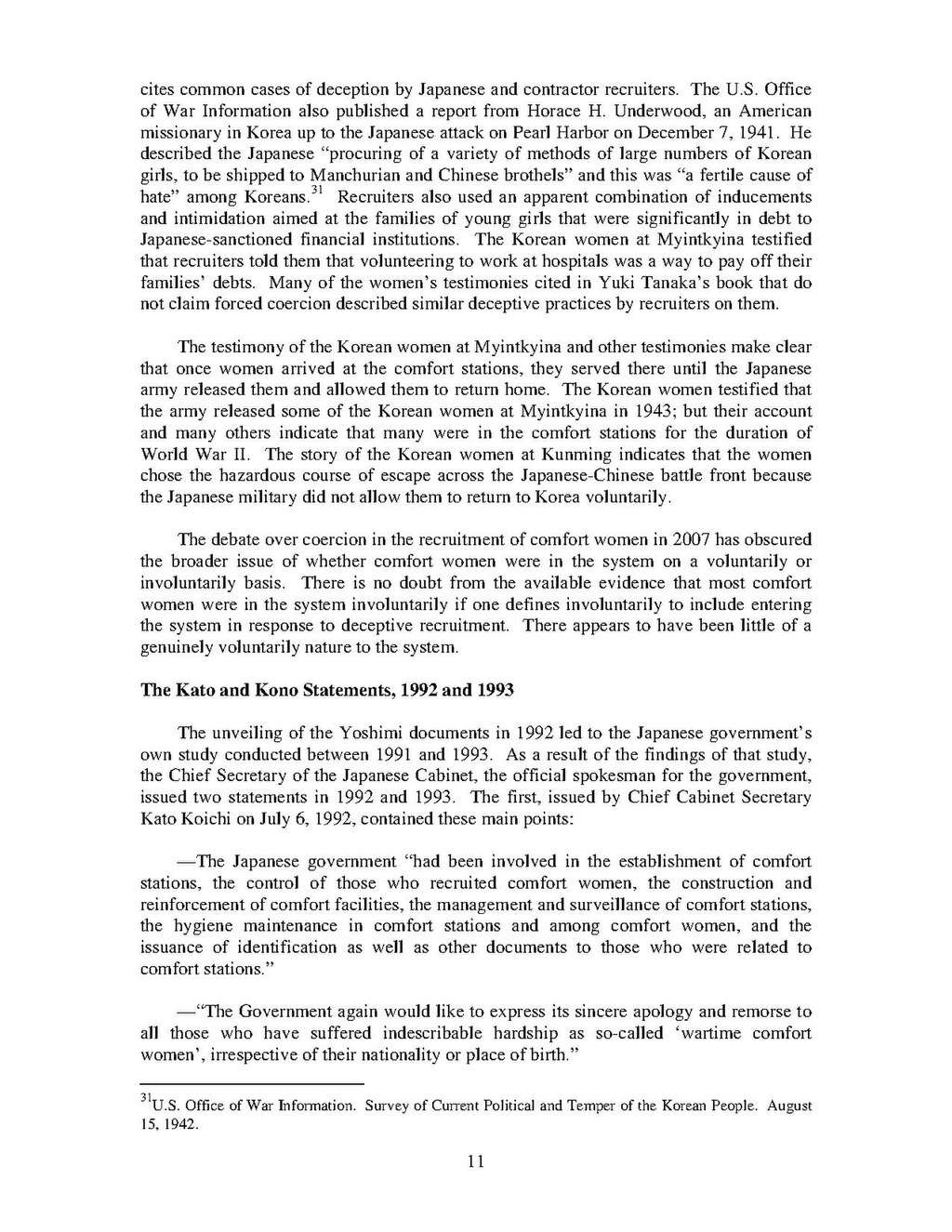cites common cases of deception by Japanese and contractor recruiters. The U.S. Office of War Information also published a report from Horace H. Underwood, an American missionary in Korea up to the Japanese attack on Pearl Harbor on December 7, 1941. He described the Japanese “procuring of a variety of methods of large numbers of Korean girls, to be shipped to Manchurian and Chinese brothels” and this was “a fertile cause of hate” among Koreans.[1] Recruiters also used an apparent combination of inducements and intimidation aimed at the families of young girls that were significantly in debt to Japanese-sanctioned financial institutions. The Korean women at Myintkyina testified that recruiters told them that volunteering to work at hospitals was a way to pay off their families’ debts. Many of the women’s testimonies cited in Yuki Tanaka’s book that do not claim forced coercion described similar deceptive practices by recruiters on them.
The testimony of the Korean women at Myintkyina and other testimonies make clear that once women arrived at the comfort stations, they served there until the Japanese army released them and allowed them to return home. The Korean women testified that the army released some of the Korean women at Myintkyina in 1943; but their account and many others indicate that many were in the comfort stations for the duration of World War II. The story of the Korean women at Kunming indicates that the women chose the hazardous course of escape across the Japanese-Chinese battle front because the Japanese military did not allow them to return to Korea voluntarily.
The debate over coercion in the recruitment of comfort women in 2007 has obscured the broader issue of whether comfort women were in the system on a voluntarily or involuntarily basis. There is no doubt from the available evidence that most comfort women were in the system involuntarily if one defines involuntarily to include entering the system in response to deceptive recruitment. There appears to have been little of a genuinely voluntarily nature to the system.
The Kato and Kono Statements, 1992 and 1993
The unveiling of the Yoshimi documents in 1992 led to the Japanese government’s own study conducted between 1991 and 1993. As a result of the findings of that study, the Chief Secretary of the Japanese Cabinet, the official spokesman for the government, issued two statements in 1992 and 1993. The first, issued by Chief Cabinet Secretary Kato Koichi on July 6, 1992, contained these main points:
—The Japanese government “had been involved in the establishment of comfort stations, the control of those who recruited comfort women, the construction and reinforcement of comfort facilities, the management and surveillance of comfort stations, the hygiene maintenance in comfort stations and among comfort women, and the issuance of identification as well as other documents to those who were related to comfort stations.”
—“The Government again would like to express its sincere apology and remorse to all those who have suffered indescribable hardship as so-called ‘wartime comfort women’, irrespective of their nationality or place of birth.”
- ↑ U.S. Office of War Information. Survey of Current Political and Temper of the Korean People. August 15, 1942.
11
